No doubt you’ve heard about the amazing benefits of walking every day. But beyond improved cardiovascular health, increased bone density, and better joint health, did you know getting your daily steps in can also boost your core strength? If that piques your interest, we have some good news. We chatted with Mike Masi, CPT, a certified personal trainer at Garage Gym Reviews, who shares 11 top-notch ways to strengthen your abs while walking.
Incorporating ab-strengthening tactics into your walking routine offers many benefits. A strong core can improve posture, reduce lower back pain, and boost balance and coordination. These benefits are essential for maintaining health and vitality while elevating your ability to perform common daily activities. Strengthening your abs while walking also helps you burn more calories, as engaging multiple muscle groups increases the intensity of your workout. This is particularly helpful if you’re looking to shed extra pounds or slim down your waistline.
If you’re ready to update your cardio routine, read on for Masi’s expert recommendations on how to strengthen your abs while walking.
Engage your core.

Engaging your core during your walk can help strengthen your abs and improve stability. Focus on bringing your belly button in toward your spine, maintaining a firm and engaged core throughout your workout.
Masi says, “This could be as simple as tightening your ab muscles as you walk. Imagine pulling your belly button toward your spine to maintain a strong, supportive core. However, be sure not to over-engage your core, either. You should feel the muscles working, but not to the point where it impedes your movement.”
Incorporate incline walking.
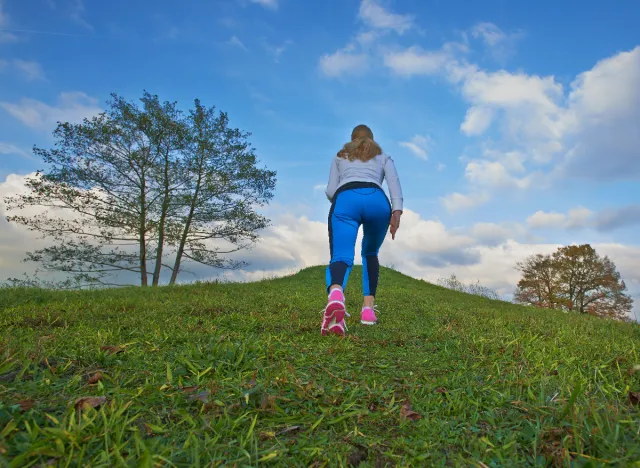
“Walking on an incline or hill engages your abs and your glutes more intensely as they work to stabilize your body and maintain balance,” Masi explains. “The most practical way to do this is on a treadmill where you can control all the parameters. Just make sure not to hold on with your hands!”
Include power walking.

Power walking involves walking at a brisk pace with exaggerated arm movements. A 2021 study found that walking briskly (e.g., power walking) can boost cardiovascular fitness, body composition, and muscular strength.
“As you increase your walking speed, you’ll increase your stride length and arm swing. Your core muscles will inevitably have to engage more to stabilize the spine, and you’ll get a better cardiovascular stimulus to boot,” says Masi.
Perform walking lunges.
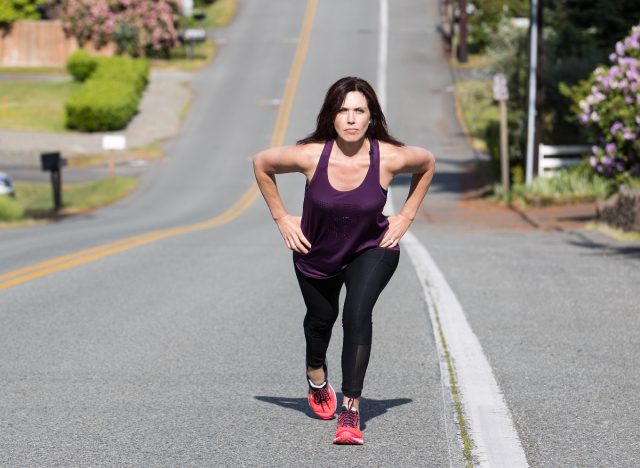
The stabilization required during lunges can increase core muscle activity.
To perform them, Masi instructs, “Step forward into a lunge position. This movement engages your abs as they stabilize your body through level changes, single-leg balance, and a narrower support base. A good way to incorporate walking lunges into a walking program is to do them to fatigue and then continue walking during your rest break for one to two minutes before repeating.”
Take squat breaks.
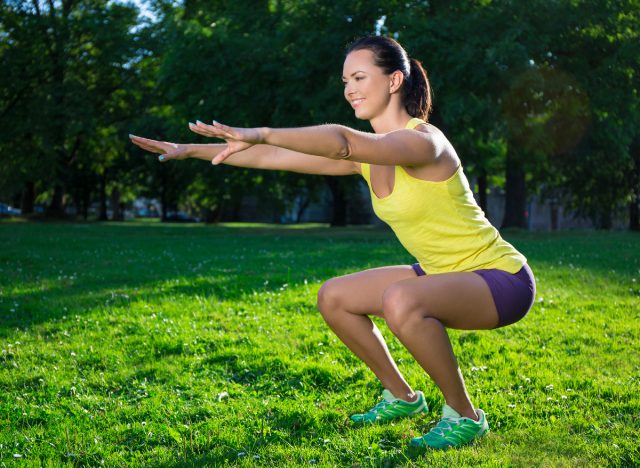
“Take small breaks from walking to perform a handful of squats. If you walk in a residential neighborhood, you can use the subtle elevation of a gutter or a driveway to elevate your heels and enable deeper squat positions, further challenging your hips and core,” says Masi.
Walk backward.
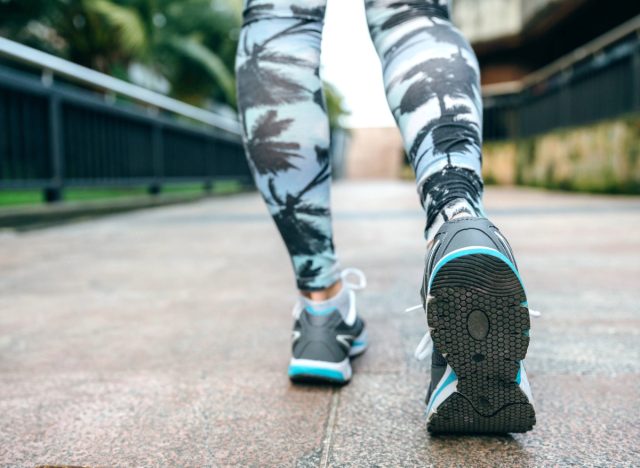
Walking backward, also known as “retro walking,” is an unconventional yet effective way to challenge your balance and engage your core muscles, according to one pilot study.
“This tip is tougher than it sounds, but if you can do it safely, try incorporating periods of backward walking into your standard walking routine,” says Masi. “This approach will break up the monotony of your conventional gait and challenge the entire core differently.”
Wear a weighted vest.

A weighted vest increases the intensity of your walk, making your core work harder to stabilize your body.
Masi tells us, “Wearing a weighted vest is a good way to increase the exercise intensity. Rucking with a loaded backpack is another way to get a similar stimulus. You can also hold the bag or vest in one hand like a suitcase for 30 to 60 seconds before swapping hands and then wearing it on your back again. This will further engage the obliques and hips on the opposite side of the weight, and it can be much more challenging than it looks.”
Do side shuffles.
This lateral movement adds variety to your walking workout and helps boost core strength and stability.
Masi explains, “Moving laterally challenges your oblique muscles and core stability. You can do standard side steps if you can’t shuffle due to skill or injury limitations.”
Perform 20 to 30 seconds of side shuffles in both directions before assuming your regular walk for a one-to-two-minute rest.
Add in ankle hops.
Ankle hops are small, controlled jumps that you can integrate into your walk for increased core strength.
“This exercise engages the core to prepare for the plyometric stimulus,” says Masi. “Keep your weight on the ball of your feet and perform small hops as if using a jump rope. At first, your feet don’t have to leave the floor. But as you get more comfortable with the exercise, you can hop higher and travel forward or backward.”
Perform 30 to 60 hops and continue walking for one to three minutes before repeating.
March!
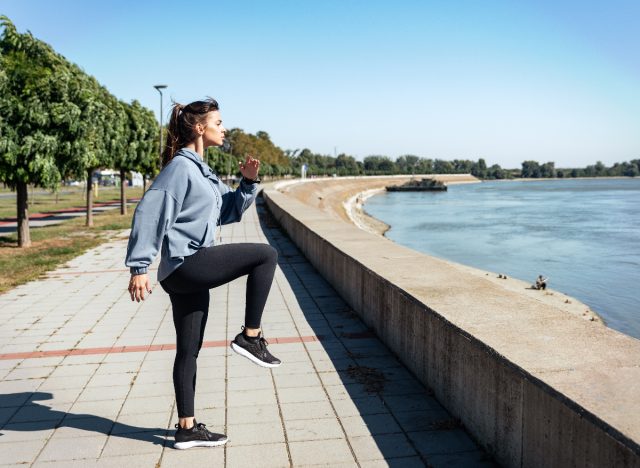
“March in place or while moving forward, lifting your knees high,” instructs Masi. “This action engages your lower abs and hip flexors and improves core strength. If balance is an issue, you can use a walking stick or place a hand on a sturdy structure for assistance.”
Incorporate interval training.

Interval training involves alternating between high-intensity and moderate-intensity walking. This variation boosts cardiovascular fitness and keeps your core engaged throughout the workout.
“Interval training is a great way to get more accomplished in a shorter period. Your core will get a greater stimulus during the higher intensity intervals than it would through a standard walking program, and you’ll burn more calories to boot,” says Masi.









